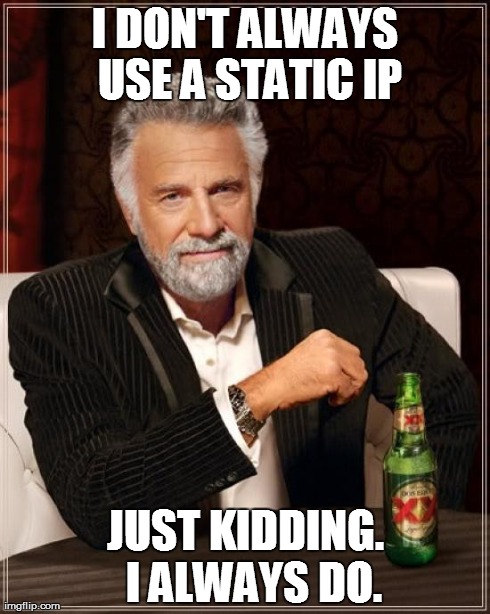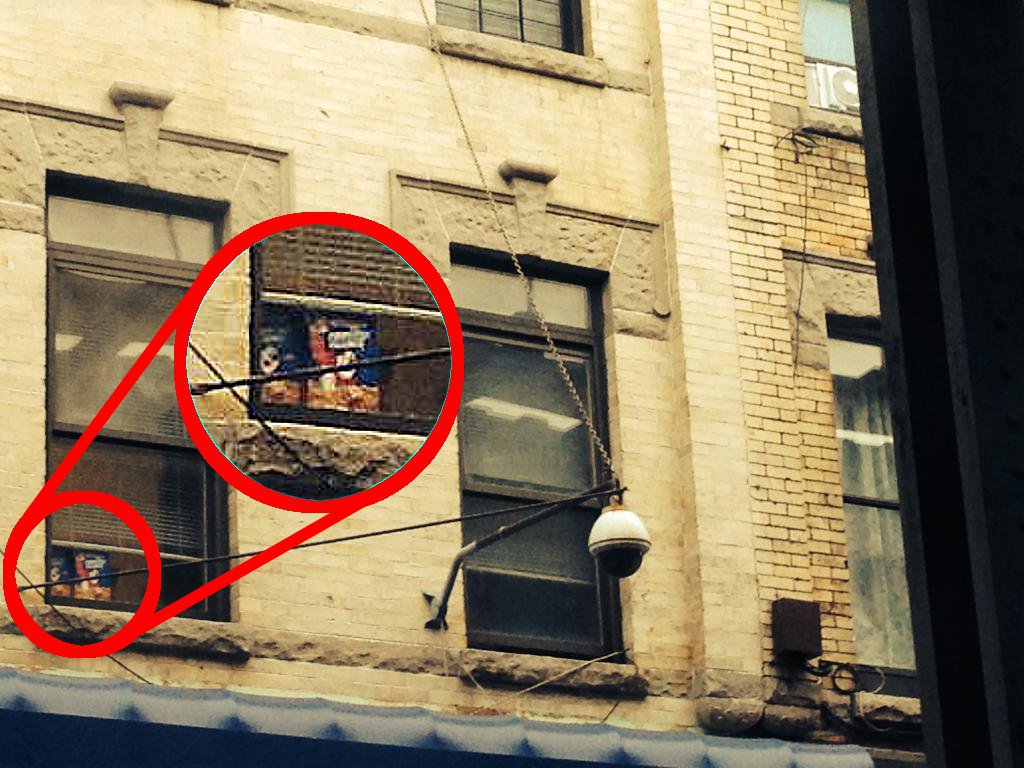-
Content Count
913 -
Joined
-
Last visited
Posts posted by Sawbones
-
-
BlackVue fell off my Recommended list when they restructured their subscription plan... and I've been using/recommending them since 2013.
-
Let me throw a scenario at you fine gentlemen.
I'm a long-time user/fan of Mobotix cameras, and I've deployed them for years. I've done residential installs, but most have been used in remote installs, where they are subjected to nasty environmental conditions, low-bandwidth connections, and run on solar power (the low power-consumption is major plus in a solar installation, where every watt is precious). They're the closest thing to immortality I've encountered in a security camera... they almost never die... like the old Timex commercial said, they "take a lickin', and keep on tickin'"
I can't say the same for some Chinese cameras I could list... which might be popular, but have a much higher failure rate.
I just acquired a vacation place, which is on-grid, and power consumption isn't an issue. There is an existing hard-wired IP-based CCTV system installed on the property, in the form of a generic WESECUU system (they're on Amazon and various other places, and are a nightmare from a network-security standpoint, since they require cloud access for notifications, and attempt to "phone home" to China, even when that feature is turned-off).
I've recently been looking at the Mobotix MOVE line of cameras, but have no experience with this newer line. They are more economical than the regular Mobotix stuff, particularly at retail prices (where Mobotix loses out heavily when weighed against the many cheaper offerings on the market, which may lack the unique features Mobotix includes, but often have video as good as Mobotix, or better).
I've acquired a MOVE bullet camera to test, and the video quality is quite good, particularly at night. It has SD-card storage, but also includes a bunch of extra I/O connections, which were a pleasant surprise... no EXT-IO expansion modules needed. I'm only planning on doing event recording, remote viewing, and emailed alarm images based on hard-wired sensor triggers... all of which this camera would seem to do out-of-the-box.
The MOVE literature seems to indicate that a central controller is required.
QuotePlease note: MOBOTIX MOVE cameras are centralized video systems in ONVIF S/G format with H.264 and typically require additi-onal centralized data storage (NAS) and a video management system that supports the ONVIF standard
And yet as I look through the web interface on this camera, it seems like it will do everything I need without that central infrastructure.
Somebody help me out here... am I missing something?
I'm also open to suggestions on what other hardware/products I should be considering. I'm a Mobotix fan, but I'm open to other brands, and I'm not against installing a heterogenous system if something else would work just as well. I have enough of a NETSEC background that I would like to avoid ChiCom stuff.
Hit me.
-
Hi jhenanneHikvision IVMS-4200 version 2.7
is Free ! It only works with cameras that have Hikvision
harware inside them!
Link to Download:
You didn’t answer his question.
Like, at all.
-
Long wavelength infrared vs short wavelength infrared.
Heat = Thermal = long wavelength.
Light = IR camera = short wavelength.
Thermal is also about 20x the price.
-
Some cameras have a digital "masking" capability for this sort of thing. Ask him to do that.
-
If the area isn't well-lit, you're going to need IR to light up the plate, and a camera with a long-pass filter. The filter is to block visible light, and transmit the longer-wavelength IR. This will prevent headlights and tail-lights from totally blooming out the image, but ensure transmission of the IR light bouncing off the plate.
Since the vehicles are moving, you're going to need something with a fast shutter speed to minimize motion blur... which means you're going to need quite a bit of IR light to ensure adequate return from the moving plate (because remember... fast shutter speed means the imager only gathers light for a VERY short time, requiring more light to produce a usable image). Consider an IP camera with shutter-speed adjustable in software.
I'd recommend a large panel illuminator, with a narrow beam angle for better range. You don't want wide-angle here. Raytec, Samsung, or something similar. Avoid going cheap on this... you need quality illumination, and lots of it. Get something that advertises at least a 150-foot range.
And consider that you need not only the plate, but the overall scene, requiring two cameras at each entrance (unless you use something with two imagers, like Mobotix). A license-plate camera with a Long-Pass Filter won't see much else besides the plate, so you need ANOTHER camera to show the overall scene (and vehicle type/color/etc). Also, without visible light, you won't be able to determine vehicle color (because IR only produces a black-and-white image)... so consider some normal flood-lights or overhead lights.
Also, something that slows the vehicle down will be a HUGE help. Even a low-height "speed hump," located right in the area-of-interest will prolong the time the vehicle stays in the camera frame, and increase your odds of getting a usable image.
If you have power, but no internet connectivity at the entrance, you could always record any images/video on an internal SD card (provided the camera supports such). Then attach your IP camera to a wireless access point installed at each entrance, and access the camera memory via wifi (with a laptop) if you ever have an incident. Remote access is nice, but you could make do with local wifi capability.
-
Just go IP. It's almost not worth it to use analog anymore with how far prices have come down on IP.
Just MHO
-
If you have power and cell signal, you're golden.
Just get a USB cellular dongle, and a compatible "travel router" that you can plug the USB dongle into (Cradlepoint makes a bunch of these, as do other manufacturers). This gives you a mobile internet setup that connects to the cell network, and allows connectivity to a network camera at the property. Set an IP camera up inside the cabin to detect motion (only do this indoors... outdoor motion detection is false-alarm city), and have it email you whenever it's tripped.
Done.
-
Can you get a cell signal at your cabin?
-
Holy cow... Talk about a thread coming back from the grave...
-
Wow...
That's just...
Yikes.
-
The Appearance of security, rather than actual security.
-
He doesn't need gigabit NOW... But he might in the future.
Just sayin'...
-
(actually, if I'm forced to use a dynamic address, I use DYNDNS)
So u will use third-party-redirect stuff ?
*I* won't... that's only for other peoples' installations.
I'll use a dynamic DNS service in somebody else's system if absolutely forced to do so... but I'm more confident in the performance of of somebody like DYN. Nothing against Hikvision's own DNS service, but I think you could do better.
Just sayin'
-
Yeah... I'm with numb-nuts (that sounded bad... ). You really should port-forward.That relying-on-a-third-party-redirect stuff is for the birds. It's yet another point of failure in an already-complex system.
Ok
u open ports and then what ?
your ip is dynamic
what do u do ?
just curios

(actually, if I'm forced to use a dynamic address, I use DYNDNS)
-
If you get enough cameras, you will need gigabit (it's good to plan ahead, because many CCTV systems grow like weeds once the owners discover all the stuff you can do with them).
If you're going to do it once, go gigabit right from the start.
-
Yeah... I'm with numb-nuts (that sounded bad... ). You really should port-forward.
That relying-on-a-third-party-redirect stuff is for the birds. It's yet another point of failure in an already-complex system.
-
Wait... ON the housing rather than IN the housing?
-
I'd forgotten about this thread.
Here's one I saw, and saved the picture. This was at a fast-food drive-thru... and presumably to see who is in the vehicle. Unfortunately, they mounted it at EXACTLY the right height for vehicle mirrors to hit it.
On the upside, it's clear those Samsung domes can take a beating!
-
6FPS should work, unless you're trying to catch a very fast-moving object
-
I saw this while driving home the other day and had to take a pic.Miley Cyrus CCTV Installs......
ROFL
We install with a wreeeeecking baaaalll...
-
-
Yeah, that is a pretty ludicrous necropost... Especially when it's spam
-
I stopped using NewEgg a year or two ago, and almost exclusively get hardware off Amazon.
The reason?
Amazon Prime. I can get cheap 2-day shipping... which used to cost me DEARLY at NewEgg.


.thumb.jpeg.7a91f0fbfee02d6ebca42167ef212305.jpeg)


BlackVue dash cam problems
in Dashcams - Mobile DVR's
Posted
They don't have a family plan. I have four vehicles between my wife, myself, and my three kids, and all of them have Blackvues.
My only option is their fleet plan, to the tune of $70/mo to cloud all four cameras. That's in addition to what you pay for cellular connectivity in the vehicle itself, through whatever mobile provider you use. Their "smart plan" would only cover 3/4 of the cameras, and cost me $30/month.
They started out allowing up to three cameras on an individual plan, and you could add cameras with a simple one-time fee... and they didn't grandfather any of their customers with older plans.
It was not a welcome change.